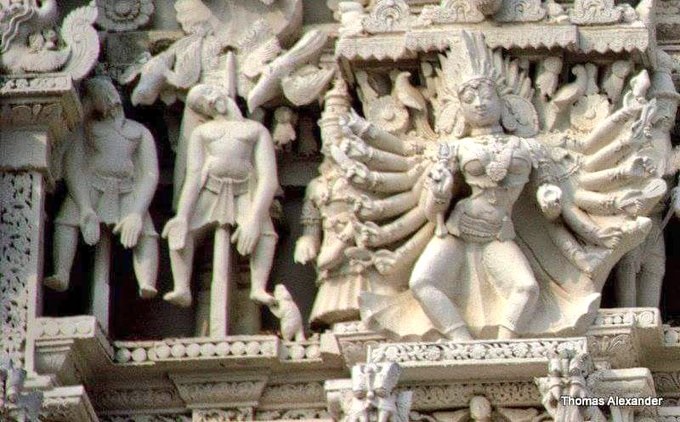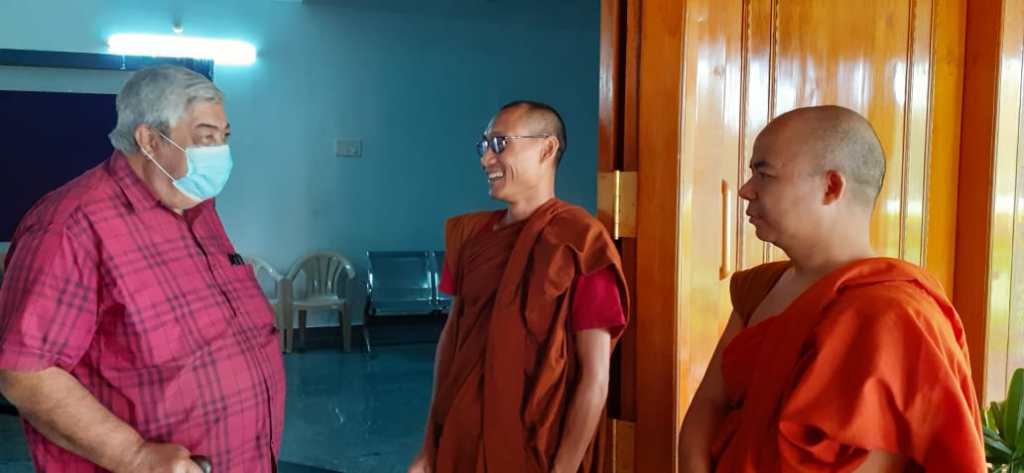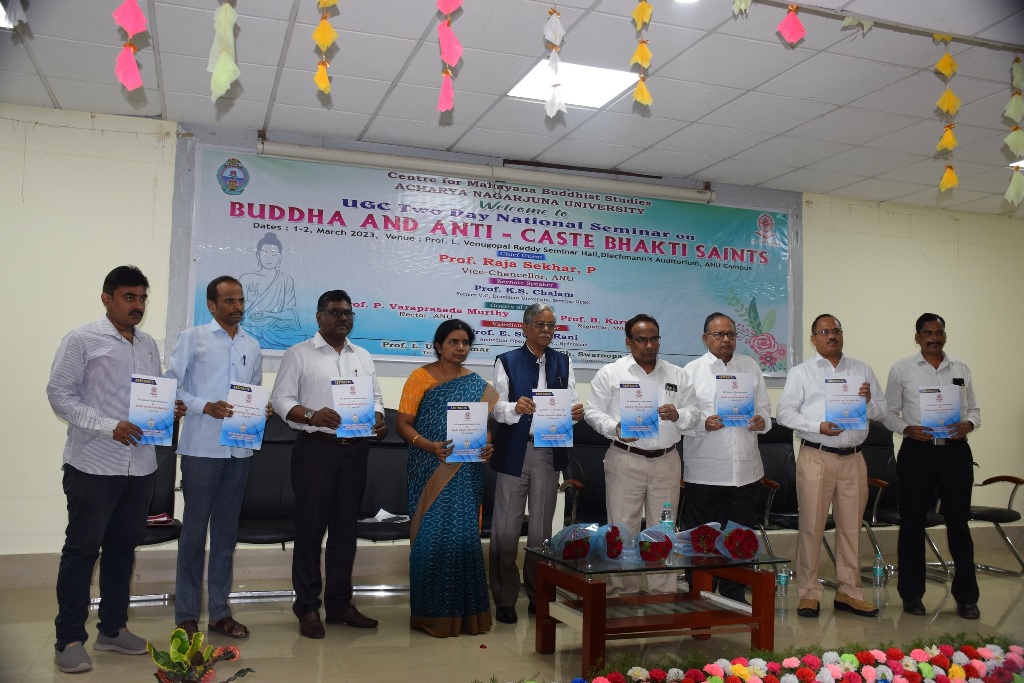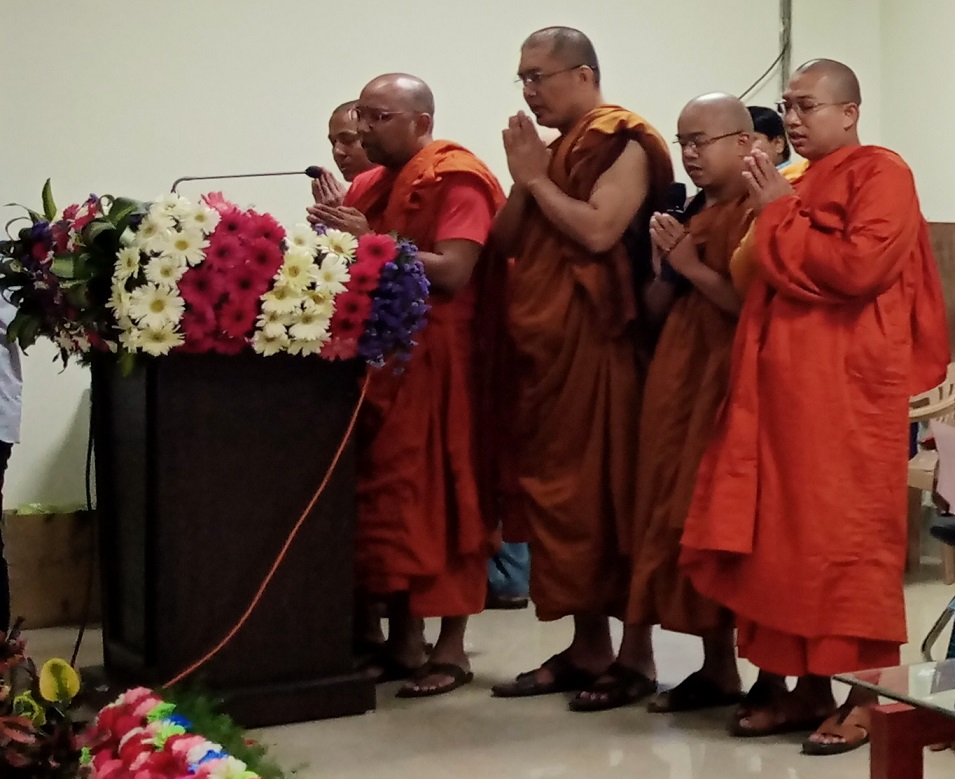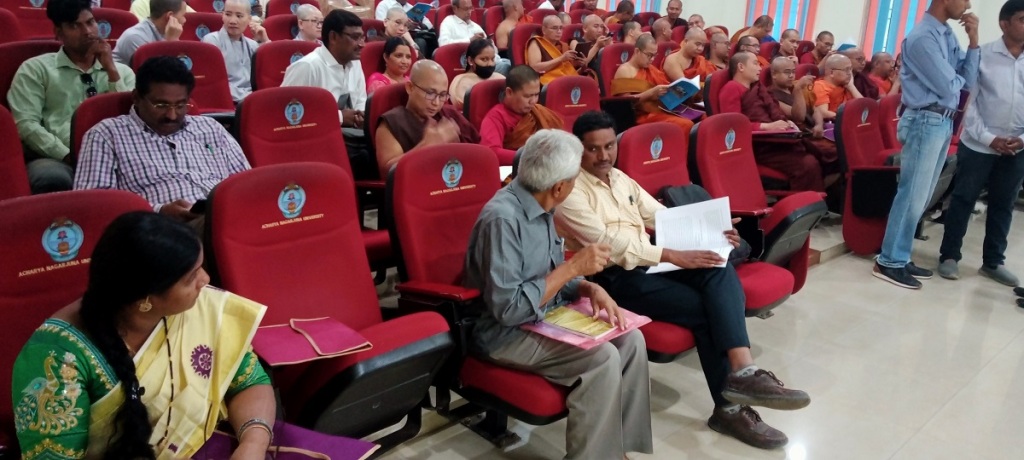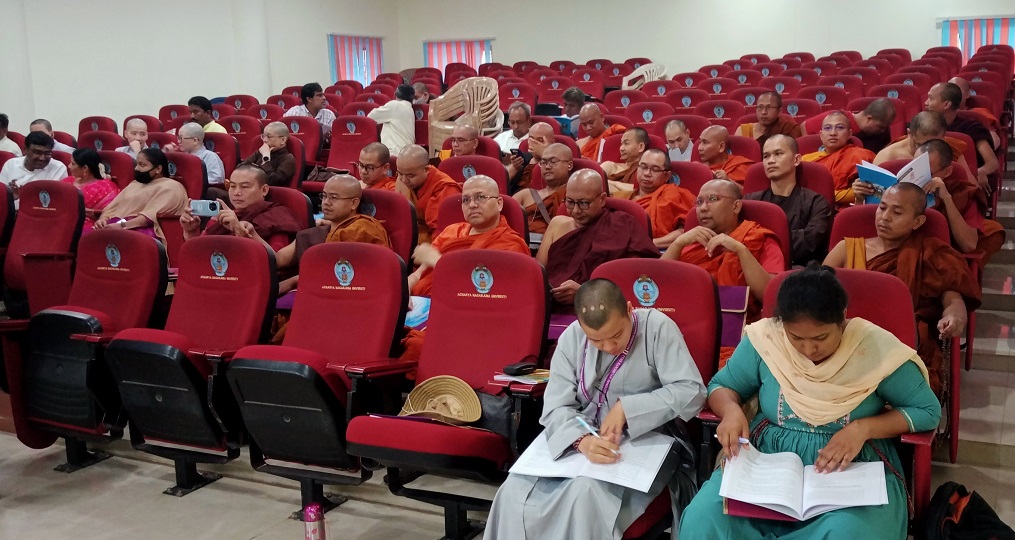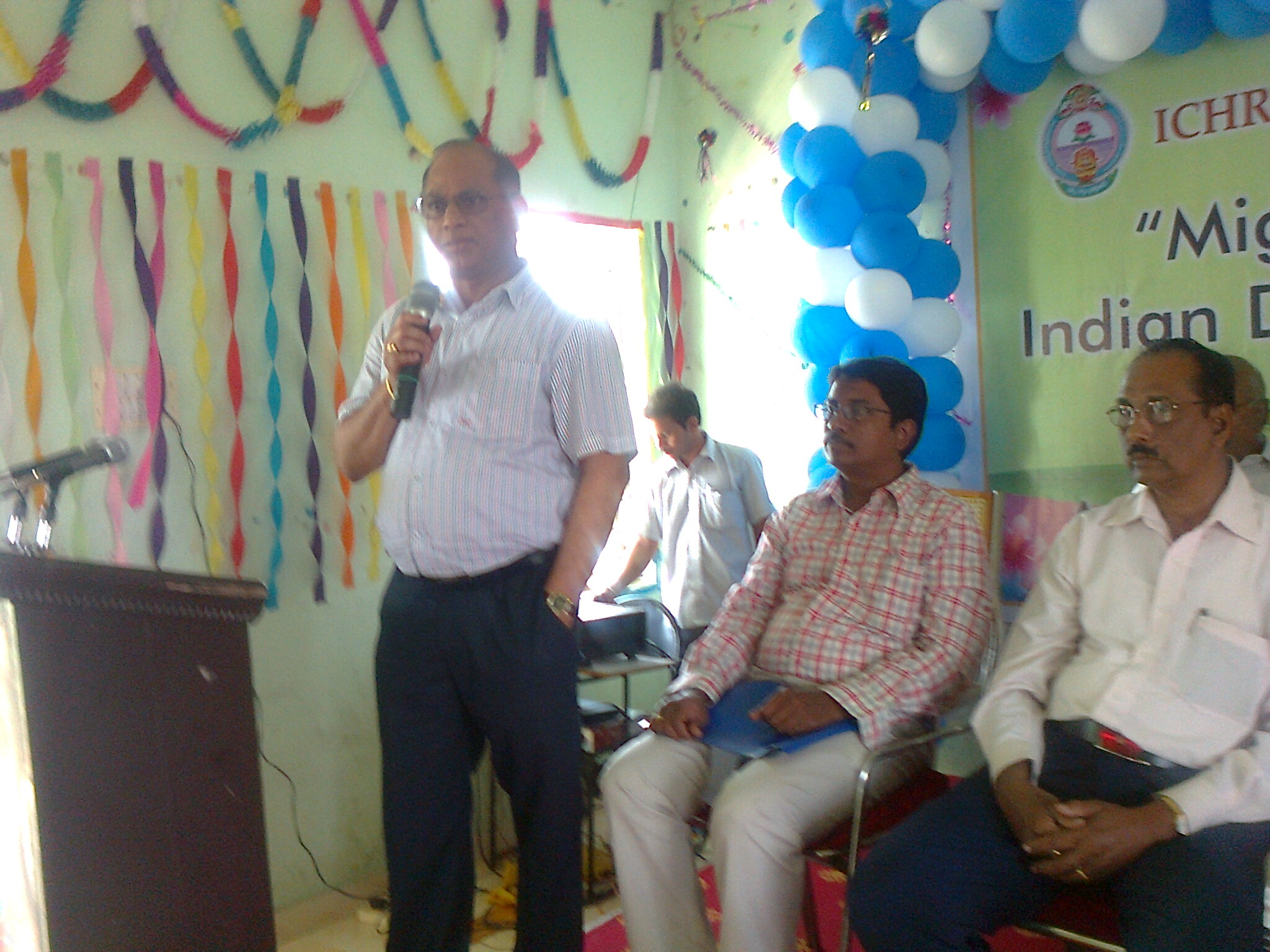National seminar on “Minor Deities in Indian Art,” held at the C. P. Ramaswami Aiyar Institute of Indological Research, Chennai on March 28th and 29th 2024 (2).

The second day proceedings started with special lectures by the invited scholars and they delivered their papers. The abstract of their papers were already included in the “Abstract” booklet circulated. As the gods or goddesses taken by each scholar pertains to a state and area, the people of other states or areas may not be knowing, but, the forms may differ, the concept, precept and evolution of such deities overlap, match and even tally with others. As people require such deities near to their places, they were started so with a low profile and small structure. If the popularity increases, then, devotees donate and start constructing a big temple. In due course of time even that temple bigger accommodating other gods and goddesses and also facilities for the vising devotees.

29-03-2024: The Special Lectures II were delivered by the following on the topics mentioned against each:
- Prof. Dr. Choodamani Nandagopal[1] Art historian, UNESCO Fellow and Tagore National Fellow, Bengaluru. – “Significant Dynamism of Minor Deities in the Regions of Karnataka” – After delving oupn philosophy, panchamahabhutas etc., she mentioned about Subramanya, Chamundesvari, Veerabadra, Dandina maramma, Kalabhairava, Narasimha, Cheluvanarayana, Channakesava, Nanjundesvara, Manjunatha, Dharmaraya, Draupati, Yantrodhara Pranavadevuru (Anjaneya) and Bhuta worship
- Dr. T. Satyamurthy[2], Former Director of Archaeology, Kerala – “Minor Deities in Kerala Art” – Ayyappa shrines and Karpa kavus are there, besides there are a large number of minor shrines of dur-moorthies (evil spirits) like Kuttichattan, Karikkutti, Maranakutti, Kalladimuttan, Bhairavan, Vishnumaya and Chattan, who are important deities in a large number of temples. Added to these deities, in recent years, worship of Thiruvalluvar the author of Tamil work Tirukkural, is found in some rural areas. The deity is purely rural one, in contrast to the agamic Thiruvalluvar worshipped in Mylapore. .
- Dr. Sudipa Ray Bandyopadhyay[3], Professor, Department of Ancient Indian History and Culture, University of Calcutta, Kolkata – “The Iconography of Jvara” – she traces that the deity of Jvara to early 9th cent.CE. Jvara ( ज्वर, Jvaram, lit. ’fever’), also called Jvarasura, is the personification of fever in Hindu tradition. He is the consort, and sometimes the attendant, of the pox-goddess, Shitala. The cult of Shitala-Jvarasura is widely popular in Bengali culture. Incidentally, in Bengali, Oriya and Hindi languages, fever is referred to as Jvara.[5] and Asura means demon. The name Jvarasura is combination of these two words – Jvara (meaning fever) and Asura (meaning demon) – Jvarasura. Thus, Jvarasura means the demon of fever. Jvarasura is disguised as a young servant. Shitala, the consort of Jvarasura is widely worshipped by village folk in whole of North India, as a protector of pox and fever diseases. In Buddhist tradition, Jvarasura is depicted sometimes as consort of Paranasabari, the Buddhist goddess of diseases. In some images, these deities are shown as flying away, to escape from wrath of Vajrayogini, the Buddhist goddess and destroyer of diseases.
Then, technical sessions were started as follows and held parallel also, as there were many papers to be presented.

29-03-2024 3 to 4 pm: The Technical Session – IV was chaired by Dr. Sudipa Ray Bandyopadhyay, Professor, Department of Ancient Indian History and Culture, University of Calcutta, Kolkata and the following papers were presented:

- Dr. Aarti Iyer[4] – “Transformation of a Hunter’s Son into a Warrior Deity: Understanding the Significance of Vettaikkorumakan” – Vettakkoru Makan (വേട്ടക്കൊരുമകന്) is a Hindu deity worshipped in parts of Northern Kerala. This deity is alternately referred as Kiratha-Sunu (son of Kirata) in Sanskrit. Vettakkorumakan is believed to be the son of Shiva by his consort Parvati, born when he assumed the form of a Kirata (hunter) to deliver a weapon known as Pashupatastra to Arjuna. He is mostly and exclusively worshipped in Malabar region of Kerala. The most famous temple of this deity is the Balussery-Kotta Vettakkorumakan temple about 25 km from Calicut. This was once the fort of the Rajas of Kurumbranad. Other prominent temples are at Ramanthali, Nileshwar, Kottakkal, Nilambur, Karaparamba and various places in Kannur district and Kasargod district. He is the family deity of the Rajas of Chirakkal, Nileshwar, Kottakkal, Nilambur Kovilakam, Kalathil Kartha’s, Aluva, Amarambalam Kovilakam and Randu Illam Vargam Nambiars. Those families among the nobility of Malabar who have Vettakkorumakan as their family deity are connected in one way or other incidentally to either Balussery Fort or Kurumbranad.Later he moved to Kottanachery temple in Vellur, Payyanur in North Malabar. A special type of firecracker called “Kathina” was his favourite.

Aerial view of the temple…

The deity inside….

the white colour-leaves neem tree and the devi inside….
- Dr. V. Preethi[5], – “Two specific forms of Māriamman in Tamil Nadu” – Neem Tree with white colored leaves is considered as Amman and worshipped by the people to get the desired from the deity. Thiruvavaduthurai is located next to Kutthalam in Mayiladuthurai district which is famous for the ancient White Vampu Mariamman temple. This temple is also considered as guardian and family deity of the people of the region. Also, it is believed by the devotees that the goddess would give the desired boon to the devotees, if they repent and surrender to her totally. She went on to claim that the temple was 2000 years old and so on. She relies upon what the Pujari said about the antiquity of the temple. Though faith is different from historicity and historical evidence, it is better that researchers verify the facts and present papers.

- Dr. V. Sandhiyalakshmi[6] – “Navagrahā in Icons” – she pointed out that the Indians copied the concept of grihas from the Greeks. From the beginning of the 6th cent.CE onwards, the iconographic innovation arose and developed. The concept days, weeks, the deities of presiding over days and weeks and related astronomical aspects are confused with the astrology. The seven-day week was known in India by the 6th century, referenced in the Pañcasiddhāntikā. The Garga Samhita, dated to 1st century BCE or CE, as a possible earlier reference to a seven-day week in India. Of course, there are works Surya Siddhanta and Vedanga Jyotisha (dated to c.1250 BCE). She could not date the “Navagruhas” or the astronomical background of the “Navagruhas”. Though, she was referring to Rig Veda and other astronomical works, she did not mention Surya Siddhanta and Vedanga Jyotisha (dated to c.1350 BCE).

29-03-2024 4 to 5 pm: On 29-03-2024 afternoon, after lunch, Technical Session – V was held at the Main Hall in parallel and chaired by Dr. T. Satyamurthy , Former Director of Archaeology, Kerala and the following papers were presented:

- Mr. Sohom Banerjee[7] “Panchananda: A lesser-known Minor Deity of Bengal”
- Mr. Sanjay S[8] – “Guardian of the Sacred: Understanding the Role of Bhairava as Ksetrapala in South Indian Temples from 10th to 13th century C.E.” – Kṣetrapāla (क्षेत्रपाल).—Kṣetrapāla is consecrated on the South East corner of the temple, for protecting the villages and cities. This is a large image with three eyes. There are figures which are Sāttvika, Rājasa and Tāmasa (having the attributes goodness, ostentatiousness and sloth)[9]. In some places figures having two or four or eight hands are seen. It is presumed that this deity is a portion of Śiva. It is stated in Agni Purāṇa, Chapter 51 that Kṣetrapālas should be figures having trident in the hand. Bhairava is often quite directly the ‘Kshetrapala’ – the Protector (‘Pala’) of the Space or Place (‘Kshetra’) – that is hailed to do exactly this for many a Temple. Indeed, one reads of the Bhairava Murti being directly entrusted with the keys to the Temple and the Night’s solemn vigil after all others have gone home. In Varanasi, There, Bhairava is hailed as the ‘Kotwal’ (‘Castellan’ – although interestingly also translated as ‘Chief of Police’) ; something taken rather literally as applies the police station immediately near to Bhairava’s main Mandir within the city, where the physical position of station commandant is, quite literally, held by a depiction of Bhairava.
- Dr. J. Sumathi[10] – “The worship of the nine river deities in Mahamaham festival”
- Mrs. N. Ushadevi[11] – “Representation of Dasa-Maha-Vidya in Madhubani painting”
- Dr. Sivakumar Challa[12] – “The Legends, Rituals and Worship of Minor Hindu Deities in the Combined Chittoor District of Andhra Pradesh”
© K. V. Ramakrishna Rao
30-03-2024.




[1] Abstracts, sl.no. 2; p.8.
[2] Abstracts, sl.no. 8; p.18.
[3] Abstracts, sl.no. 9; p.20.
[4] Abstracts, sl.no. 10; p.21.
[5] Abstracts, sl.no. 21; p.37.
[6] Abstracts, sl.no. 25; p.42.
[7] Abstracts, sl.no. 30; p.48.
[8] Abstracts, sl.no. 26; p.43.
[9] Kṣetrapāla (क्षेत्रपाल) – https://www.wisdomlib.org/definition/kshetrapala
[10] Abstracts, sl.no. 31; p.50.
[11] Abstracts, sl.no. 32; p.51.
[12] Abstracts, sl.no. 27; p.44


Filed under: godavari, Harappa, historiography, history, history curriculum, history ideology, indology, interpretation, invaded, invader, jain, Jain Museum, migration, mimamsa, mining, minor deity, minor god, minor goddess, minority deity, Monkey God, Nagarjuna, naked, Namagiri goddess, Nandhita Krishna, revising, sectarianism, secularism, sedition, series, shaft, Shamanism, shiva, siddha, Siddhanta, siddhar, Silver cube, siva-sakti, slave, sociology, spirituality, Tantra, technology, temple, terracotta, terracotta figurine, thanjavur, timber, TL, tortoise, tradition, translating, transport, trepanation, tribal, tribe, turtle, turukka, udupi, UNESCO, upanishads, update, updating, uraiyur, Vaikunda, varanasi, Vayu, Veda, vedanga jyotisha, Vedas, vedic astronomy, vedic chronology, vijayanagar, Vijayanagara, Vishnu, votive, wheel, worker, workshop, writer, yagna, Yantra | Tagged: God, godavari, goddess, historicity, icon, iconoclasm | Leave a comment »








